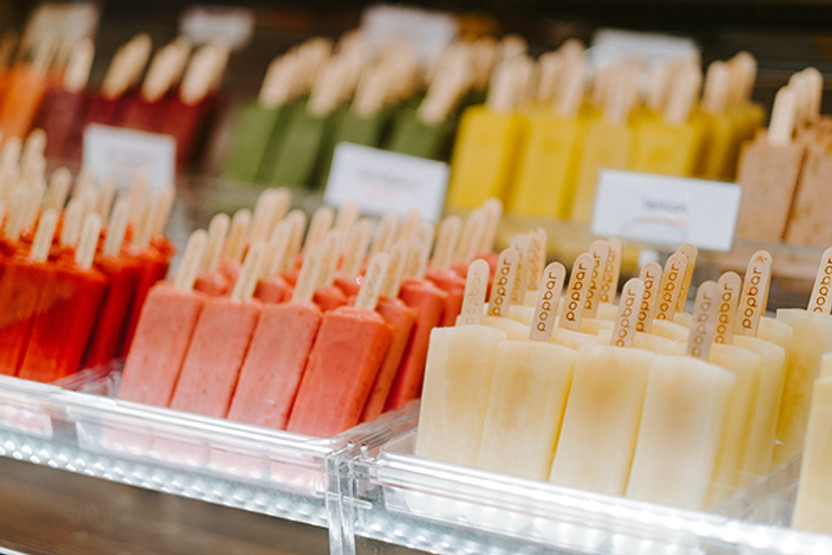Paletas - from a humble family creation to global treat
Posted by Naomi Posner-Horie on Sep 27th 2022
Paletas - an old tradition that is new to some.
A new trend seems to be appearing in the world of ice cream shops: paletas. But is it really new? It would appear that paletas have been around for nearly a century, and have gradually made their way into the mainstream. Here’s what we’ve discovered.
A brief history of the paleta
Frozen desserts known as paletas in Spanish were first created in Tocumbo, Michoacan in Mexico in the 1930’s. Tocumbo is a small town with a few thousand inhabitants. A certain gentleman by the name of Rafael Malfavón Andrade is credited with creating the first paletas. From these humble beginnings, paletas began to find their way to other Mexican towns until they began to appear in bigger cities such as Guadalajara and Mexico City in the 1940’s and 1950’s.
The way businesses were opened and the knowledge of making paletas, and later ice cream often known as “nieves” grew through a loosely organized family to family sharing system, that usually carried the name “La Michoacana” in the business. This is due to the fact that Tocumbo is located in the state of Michoacan.
Sometime in the 1950’s or 1960’s, “La Michoacana” ice cream shops began to appear in the United States through the same system of family to family support rather than through franchising and other means of more commonly known business growth. This is due to the large populations of Mexican and Mexican-Americans that have always lived in the United States.
As a result, there are now many groups and sub-groups of “La Michoacana” ice cream shops throughout Mexico and the United States. In fact, there are tens of thousands of such shops that sell paletas, and other types of treats. A simple google search in your area will reveal the full extent of these shops.
In recent years, “paletas” have started to enter the mainstream consciousness of ice cream businesses - those that are not in any way affiliated with “La Michoacana” or its Mexican roots.
What is the difference between a paleta and a popsicle?
“Paleta” refers to the stick on which the treat is on, and in fact, lollipops are also called “paletas.” Both popsicles and paletas use these wooden sticks.
Paletas are artisanal and made in small batches. They are usually sold by the same business that makes them out of small mom and pop shops. Popsicles are usually manufactured in large quantities in factories, and distributed through a large network across large geographical areas.
Paletas use locally sourced ingredients, relying heavily on fruits that are locally available. This is due to the fact that Mexico has a wide variety of fresh fruits available throughout the year. Popsicles are usually just water, sugar and artificial flavors and colors.
Paletas usually have one shape that tends to be rectangular. Their claim to fame is less about how they are shaped, and more about what flavor they are. Popsicles have a wide variety of shapes.
Paletas usually have chunks of fresh fruit and/or other ingredients in them that are decoratively placed in the paleta.
Paletas are usually wrapped in clear plastic, and displayed in glass cases that showcase their colors and flavors prominently. Popsicles are usually wrapped such that you cannot see what it is until you open it.
Paletas are usually categorized into two types: water-based, and milk-based. The water-based paletas are usually fruit flavored, and are naturally and obviously dairy-free and vegan, although they are rarely referred to as such. The milk-based paletas usually have chunks of popular cookies and candies to attract the attention of would-be customers. Popular flavors contain chocolate, pecans, cream cheese, and/or caramel.
Current trends
In 1989, Tocumbo established the annual “Feria de Paleta” or Paleta Festival in late December. This is an ongoing Festival that is visited by tens of thousands of people every year.
Although some of the sub-groups of “La Michoacana” have started to franchise their operations, there are still many businesses that receive the family-to-family type support that has created paletas and other Mexican-developed frozen desserts.
In addition to water-based (vegan and non-dairy) paletas, some shops are beginning to offer milk-alternative paletas that are coconut or oat-based. Froconut® works especially well as a base for paletas.
As paletas make their way into mainstream American shops, it is worth acknowledging the roots and development of this popular treat. As new shops consider serving paletas, they may find it worthwhile to visit a nearby Mexican-owned shop to see what they can learn and experience.
Photo credit
Photo by Lindsay Moe on Unsplash

